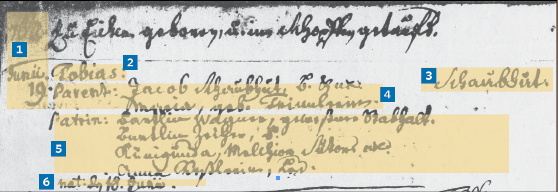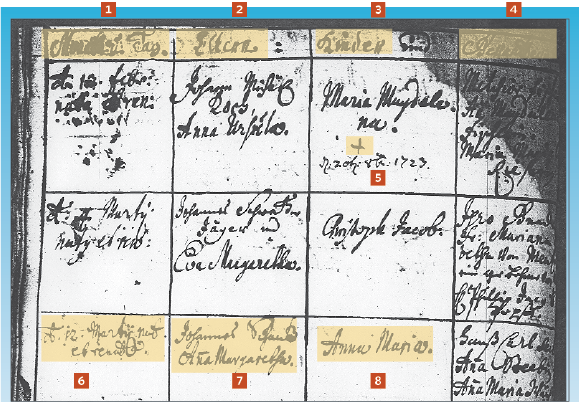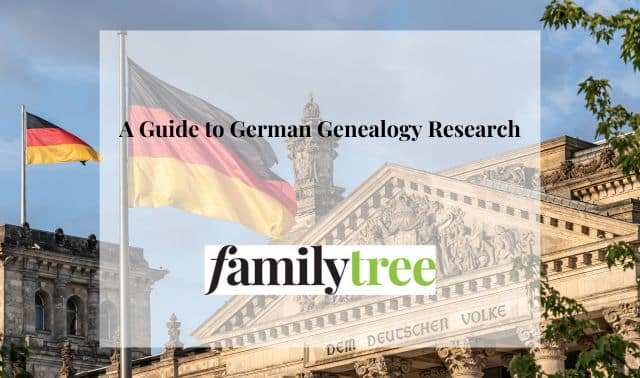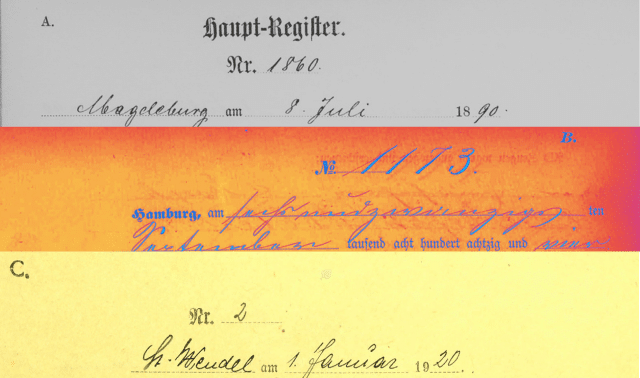Sign up for the Family Tree Newsletter! Plus, you’ll receive our 10 Essential Genealogy Research Forms PDF as a special thank you.
Get Your Free Genealogy Forms
"*" indicates required fields

Unfamiliar handwriting and language can make German church records intimidating, but you can interpret them with practice and a few resources. First, learn common words, such as Gatte (husband), Tauf (baptism) and names of months. Refer to the FamilySearch Wiki on the subject: Look especially for the topics Church Records, Handwriting and Language, and Languages, and for the German and Latin genealogical word lists. German Catholic church records are generally in Latin and Protestant records in German.
Reading church records in paragraph format
Tobias Schaubhut’s baptismal record from the Lutheran church records of Schopfheim parish, Baden, Germany (below), has a combination of German and Latin terms.

The parts of the record, translated, are:
1. Date of baptism: 1762 June 19
2. Child’s first name: Tobias
3.Child’s last name: Schaubhut. (The mark over the letter u is used to distinguish it from the letter n.)
4. Parents: Jacob Schaubhut and wife Maria, born (geb.) Trinnlerin. Maria’s maiden name is Trinnler; the -in is a feminine suffix.
5. Godparents (Patrin): Bartlin Wagner, former regional judge (gewesener Stabhalt); Bartlin Zeiher; [illegible], Melchior Sutter wife (ux.); Anna Rosserlin (or Kesslerin), single (Led.)
6. Child’s date of birth (nat.): 18 June
Reading church records in tabular format
Some German church records—such as Anna Maria Schantz’s 1720 baptismal register (below) from Gondelsheim, Baden—are in tabular format, with columns for baptism date, parents’ names and other details. You might find these easier to read than the paragraph format used above for Tobias Schaubhut’s record.

The column headings and information include:
1. Month and day (Monat und Tag)
2. Parents (Eltern)
3. Children (Kinder)
4. Godparents (Although it’s difficult to read on this photocopy, I believe this column is labeled Gevattern. German records also sometimes use the words Taufpaten or Taufzeugen to mean godparents.)
5. Cross (This indicates the date when this person died.)
6. Date of baptism (12 March)
7. Names of parents (The child’s parents are Johannes Schantz and Anna Margaretha. (Note the gothic handwriting. The line over the n in Ana indicates the letter should be doubled; the name is Anna.)
8. Child’s name (Anna Maria)
A version of this article appeared in the October/November 2013 Family Tree Magazine.




